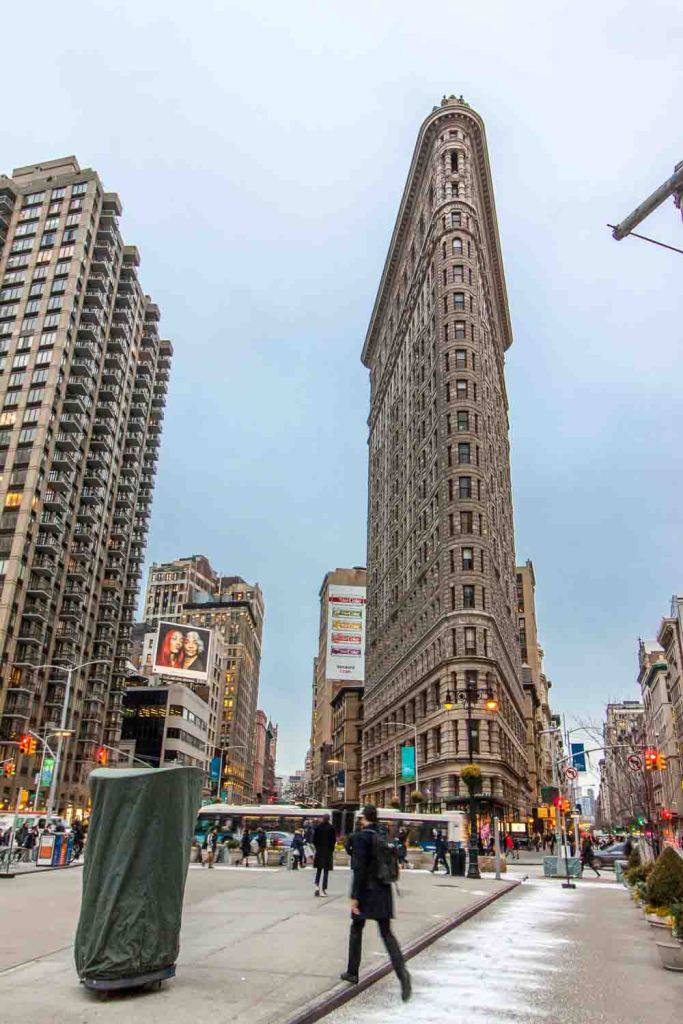Scroll down for English version

Con 80 mil bombillas incandescentes se iluminó por primera vez el horizonte neoyorkino hace 101 años y es que el Edificio Woolworth abrió sus puertas un 24 de abril de 1913.
Se dice que el señor Frank W. Woolworth pagó este rascacielos con su fortuna personal y participó estrechamente en cada decisión de diseño de su Catedral del Comercio encargando el proyecto al arquitecto Cass Gilbert, quien fue el que realizó este suntuoso Edificio Woolworth que fue el edificio mas alto del mundo de 1913 a 1930.
Gracias a sus 792 pies de altura, el Edificio Woolworth también era conocido como la Catedral del Comercio por tener dimensiones en ese entonces monumentales para las oficinas principales de una tienda, y también por adoptar elementos parecidos a los de la Catedral de Notre Dame en Paris.

Al ser un magnifico ejemplo de los primeros rascacielos de Manhattan, me imagino que el Edificio Woolworth tiene muchos admiradores, visitantes y curiosos que acuden dia con dia, aunque resalta que en la entrada hay un cartel que dice no admitir la entrada a turistas. Pero no me pude resistir porque en el sitio del Museo de los Rascacielos encontré que dentro del lobby se encuentran unas estatuillas que inmortalizan a personalidades que estuvieron involucrados en el diseño y construcción, y si! ahi siguen… No pude sacar todas las fotos que yo quería porque pedí permiso y con mucho recelo me lo dieron y como que no veían con buena cara mi entusiasmo por las historias escondidas en esos altos rincones de la entrada del Edificio Woolworth.




En 2012, la parte superior del edificio, es decir, la sección de la torre que descansa sobre un bloque de 28 pisos, fue vendida a unos inversores que diseñaron en esos pisos 32 departamentos de lujo con un acceso especial a amenidades exclusivas, una piscina restaurada que fue parte de la estructura original de 1913, así como un penthouse de tres pisos que debe ser digno de un escenario de película.
Estas renovaciones se las encargaron al arquitecto y diseñador francés Thierry Despont, quien por su exquisito estilo y elegancia había tenido otros proyectos a su cargo entre los que destacan la restauración de la Columna Vendome en París, la Estatua de la Libertad, la tienda Cartier de la Quinta Avenida, y el Hotel Carlyle de Nueva York.
Aunque hace mucho que el Edificio Woolworth dejó de ser el mas alto rascacielos de Manhattan, se puede distinguir en el horizonte tapizado de magnificos edificios tan característicos de Nueva York que continúa con construcciones de edificios cada vez más altos. Con todo y eso, este rascacielos se distingue en el horizonte de Manhattan.
Woolworth Building
The architect Cass Gilbert was in charge of the Woolworth Building which was the tallest building in the world for 17 years (from 1913 to 1930), and building skyscrapers became a competition to demonstrate greatness and success, something that Mr. Frank W. Woolworth understood very well. He did not spare his millions to build a monumental headquarters for his stores.
The height of the Woolworth Building is 792 feet (241 meters). In 2012, the top floors of the building, which is the tower section that rests on a block of 28-story base, was sold to investors who designed 32 luxury apartments on those floors with special access to exclusive amenities, including a swimming pool that was part of the original 1913 structure, as well as a three-story penthouse that should be worthy of a movie set.
These renovations were commissioned by the French architect and designer Thierry Despont, who due to his exquisite style of elegance and refinement, had had other projects in charge, including the restoration of the Vendome Column in Paris, the Statue of Liberty, the Cartier store on Fifth Avenue, and the Carlyle Hotel in New York.
Although the Woolworth Building has long ceased to be the tallest skyscraper in Manhattan, it can be distinguished in the skyline covered with magnificent buildings so characteristic of New York.
They called it the Cathedral of Commerce because of such dimensions and also because it has elements that evoke Notre Dame Cathedral of Paris. And one of the eccentricities are the figures that the architect added inside the building’s lobby. The architect immortalized himself with a statuette hugging a scale model of the Woolworth, and also added characters such as the owner and wealthy Mr. Woolworth, Thompson. You will find these peculiar statues after the revolving door at the entrance.
Being a magnificent example of Manhattan’s first skyscrapers, I believe that the Woolworth Building has many admirers, visitors and curious people who come every day, but sadly it does not allow tourists to enter. In fact, in order to take photographs of some of these rare statues that I mentioned, I had to ask permission from the people in the lobby. One of them, with hesitation, agreed to that, but I didn’t have the same luck with his boss, I guess, who didn’t look kindly on my enthusiasm for the stories hidden in those high corners at the entrance of the Woolworth Building and I could only manage to take these four images.
References: https://www.6sqft.com/secrets-of-the-woolworth-building/
https://old.skyscraper.org/EXHIBITIONS/WOOLWORTH/corbels.php


































































































